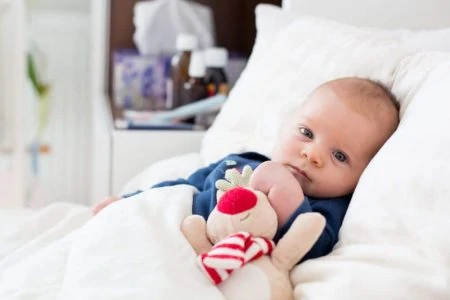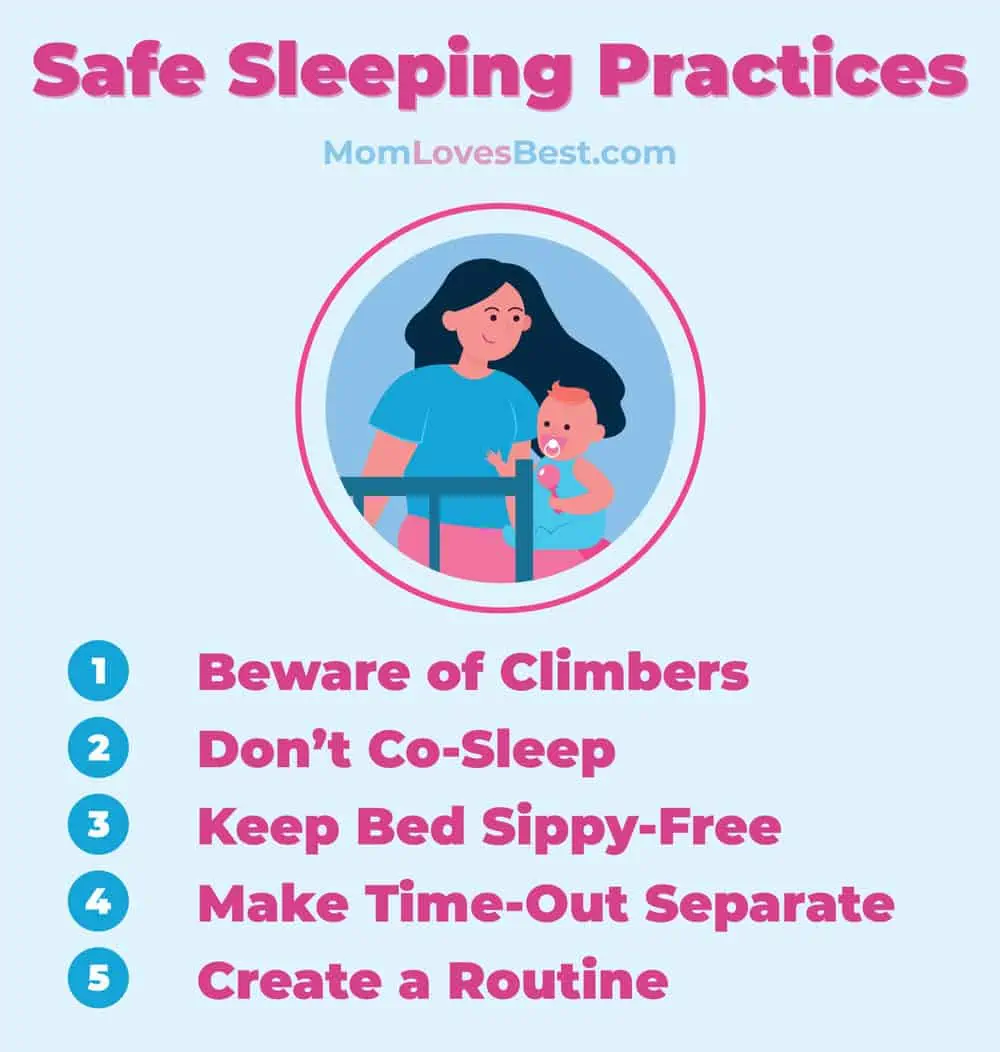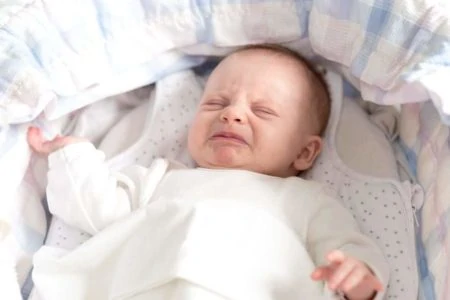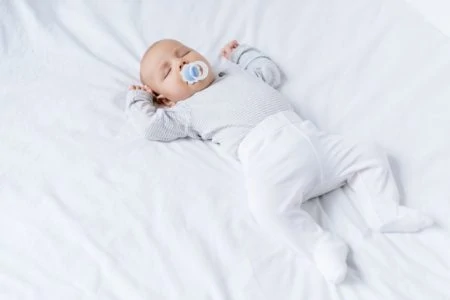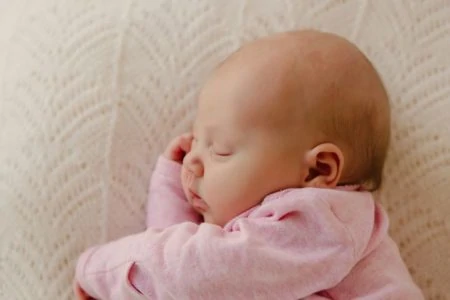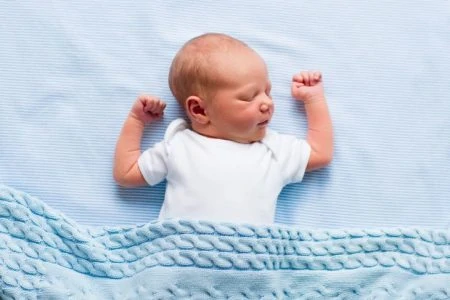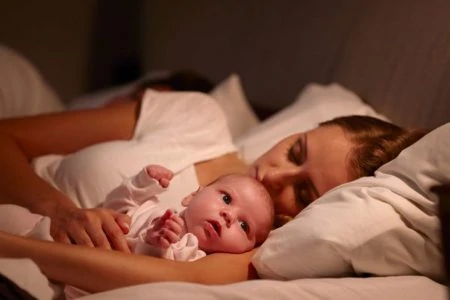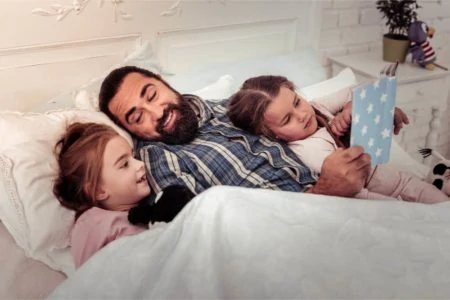Staring at a bare crib mattress can feel a little stark, right?
After months of hearing strict rules about keeping the crib empty to prevent suffocation, it feels counterintuitive to leave your baby sleeping on a flat, plain surface. You naturally want to tuck them in with a soft blanket or prop them up on a cozy pillow.
Hold that thought! You can absolutely add these comforts to your little one’s routine, but timing is everything.
In this guide, we will break down exactly when it is safe to introduce pillows and blankets, along with the safest ways to transition your child to a “big kid” sleep setup.
Key Takeaways
- Wait for the first birthday: The American Academy of Pediatrics (AAP) advises keeping the crib bare until your baby is at least 12 months old.
- Pillows come later: Most experts recommend waiting to introduce pillows until your child transitions to a toddler bed, usually around age 2.
- Size and material matter: When you do introduce a blanket, opt for small, breathable, thin muslin or cotton options rather than heavy quilts or fleece.
- Avoid weighted blankets: Weighted products are not safe for infants or toddlers and should be avoided entirely for this age group.
Why Blankets Are Dangerous for Babies
Navigating the list of “don’ts” for babies is exhausting, but we do it because safety is the priority. From swaddling techniques to crib bumpers, the rules seem endless.
The presence of soft bedding, including blankets and pillows, in cribs is linked to Sudden Infant Death Syndrome (SIDS) and Accidental Suffocation and Strangulation in Bed (ASSB). For the first 12 months of life, the safest place for a baby is a firm mattress with a fitted sheet and nothing else.
Objects like pillows, stuffed animals, or bumper pads pose serious suffocation risks because babies lack the motor skills to push these items away from their faces if they roll into them (1).
Keep an eye out for these other common hazards for children under one year:
- Mobiles: If you use a mobile, ensure it is securely attached and shortened once your baby can push up on their hands and knees so they cannot pull it down.
- Loose Sheets: Loose fabric is a hazard. Always double-check that you have the correct size of fitted crib sheets for your specific baby mattress.
- Car Seats: Never place a baby carrier or car seat inside the crib. It can tip over due to the soft mattress surface, leading to injury or suffocation.
When Can I Introduce Blankets?
The risk of SIDS decreases significantly after a baby turns one year old. According to the AAP, it is generally safe to introduce a small, thin blanket once your child hits the 12-month mark.
However, every child develops differently. Just because they turn one doesn’t mean they need a blanket immediately. Many parents wait until 18 months or even older.
The general rule is simple: If your toddler has the motor skills to move around freely, roll over easily, and push objects away from their face, they are likely ready for a small blanket.
If you are worried about warmth before they hit these milestones, skip the loose bedding and use a swaddle (for newborns) or a sleep sack (for older babies). These wearable blankets keep them cozy without the suffocation risk.
When Can I Introduce Pillows?
Pillows are a different story. While a blanket might be okay at 12 months, pillows generally shouldn’t be introduced until your child moves from the bassinet or crib into a toddler bed.
There is rarely a need for a baby or young toddler to use a pillow. Their heads are larger relative to their bodies, and a flat surface is actually better for their spinal alignment and airway.
Experts suggest waiting until 18 to 24 months to introduce pillows (2). By this age, the risk of suffocation is minimal, and they are moving to a bed where pillows are standard. When you do buy one, look for a small, firm “toddler pillow” rather than a fluffy adult-sized one.
Safely Using Blankets and Pillows
Sleep safety remains important even after the first birthday. You want your toddler to be comfortable, but you also want peace of mind.
Follow these guidelines to keep your toddler safe at night:
1. Be Mindful of Size and Weight
Just because the SIDS risk has dropped doesn’t mean anything goes. Giant, heavy comforters or weighted blankets can still trap a small child.
Avoid quilts with loose ribbons, fringe, or strings that could wrap around little fingers or necks. Stick to breathable materials like cotton or muslin.
2. Limit Crib Clutter
If your toddler is over 12 months old but still sleeping in a crib, keep the environment relatively clear.
One small, thin blanket and a favorite stuffed animal are fine. You don’t want the crib so full of toys that your child uses them as a step-stool to climb out.
3. Start With a Lovie
A security blanket, or “lovie,” is the perfect transition tool. It is small enough to be safe for a one-year-old but offers major emotional comfort.

Why we love this option: Small lovies like this one are breathable and manageable for small hands. Introduce it during playtime or supervised naps first so you can see how your child interacts with it. If they bury their face in it and don’t move, wait a few more months.
Safe Sleeping Practices for Toddlers
Proactive sleep safety evolves as your child grows.
While you might be done with the newborn “back to sleep” anxiety, toddler sleep brings new challenges. Here is how to handle the next phase.
1. Watch Out for Escape Artists
Toddlers are notorious for learning how to climb out of cribs. Even with the mattress lowered, they find a way. Once your child starts attempting to climb out (usually around 18-24 months), it is safer to switch to a toddler bed or a floor bed to prevent dangerous falls.
2. Avoid Bed-Sharing
Although babies over one year old are at lower risk for SIDS, co-sleeping generally isn’t recommended. Your toddler needs to learn to self-soothe in their own space. Plus, adult mattresses and heavy duvets are not designed with toddler safety in mind.
3. Ditch the Nighttime Bottle
If your toddler is attached to a sippy cup or bottle at night, fill it with water only. Milk or juice pools in the mouth while they sleep, leading to “bottle rot” (tooth decay). Ideally, try to eliminate the cup entirely to prevent leaks and bed-wetting issues.
4. Keep Discipline Separate
Never use the crib or bed as a time-out spot. You want your child to view their bed as a sanctuary for rest, not a place of punishment. Create a separate “calm down corner” for behavioral moments.
5. Stick to a Routine
Toddlers crave predictability. A consistent bedtime routine, bath, book, bed, signals to their brain that it is time to wind down. This consistency reduces bedtime battles and helps them settle down faster.
FAQs
Rest Easy
There is no magic switch that flips at a certain age making your child ready for full bedding. The trick is to watch their development.
Once they hit the one-year mark, you have the green light for a small blanket, but don’t feel pressured to use one if they are happy in a sleep sack. Save the pillows and plush comforters for the transition to the toddler bed.
Trust your gut, follow the safety guidelines, and enjoy watching your little one snooze safely.
